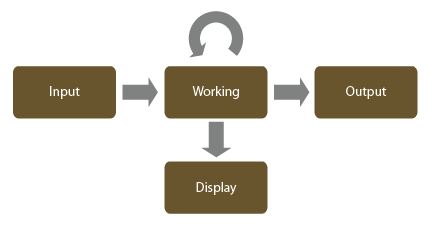Color management involves converting color values between color spaces. This conversion happens at specific points along a color pipeline.

- When importing media, color values must be converted to a common working space so that color information can be properly combined with other sources. For example, to combine on-set footage with 3D CG rendered elements and a painted matte background, the images should be in the same color space. If the images originated in different color spaces, they require different input transforms to convert them to a common working space.
- While working, color values in your current working space must be converted to a color space that is appropriate for your system's monitor. For example, if you are working in a scene-linear color space, then you need to apply a transform that tone-maps the images and converts them to values that are appropriate for your display. This display transform is not baked into the underlying color values, but is only applied on-the-fly for previewing.
- Also while working, you may want to switch color spaces to perform specific operations. For example, some operations like compositing and blurring work best in a scene-linear space, but other operations like noise and grain operations, or tracking and stabilization, work best in a video or log space. When performing conversions like these, it's best to use an invertible transform to preserve the original color information. In addition, you need to change your display transform to match the new working space.
- Finally when outputting, you need to convert colors from your working space to the color space that is appropriate for your deliverables. For example, SD video, HD video, and digital cinema all use different color spaces, and require different output transforms.